When done right, marketing can be about more than return on investment or brand metrics.
It can inspire audiences, tell meaningful stories, and share valuable information with the world.
When we talk about “marketing that moves,” global brands like Nike or Dove easily come to mind. Y’know, the big-scale campaigns that go viral, make you cry with their upbeat messages of hope and wonder, and are forwarded to you by your Aunt Annette 10 years after the fact?

For small and midsize businesses (SMBs), marketing campaigns may be smaller—c’mon, who has the budget to advertise in the Superbowl?!—but there’s no reason they can’t pack the same punch.
Great marketing campaigns stand out when brave marketers take chances and play by their own rules to get ahead in the game. And that’s exactly what the team at allWomen do. Unafraid to stay true to their mission, they boldly test and re-examine go-to tactics to create a truly unique marketing experience.
Simply put, they bring Nike’s iconic slogan to life: They just do it.
Meet allWomen: A Small Team with a Big Mission
What’s in a mission statement? For many companies, it’s a drawn-out declaration painted in bold colors in their foyer. For Barcelona-based allWomen—an academy that upskills women in the workforce to take on and excel in tech positions—it’s something that fuels everything they do, from operations to marketing. It’s not lengthy or overly complicated. It’s simple and gets straight to the point:

We aim to close the gender gap in tech, as well as empower women in any field or life aspect within our community. — Laura Fernandez Gimenez, CEO, and co-founder, allWomen
With a goal like that, it’s pretty easy to root for allWomen—what kind of troll is against empowerment, right? But a great story doesn’t mean success is easy for the team.
Looking at the Landscape—and the Gender Gap
Currently, only about 25% of tech jobs are held by women worldwide. Sounds like a big opportunity for talent-starved companies to recruit, right? Wrong. When it comes to increasing the number of women in tech roles, it’s a slow-burning candle. For example, female software engineers have increased by only 2% in the last *21 years*. And it’s not for lack of trying. It’s reported that 66% of women who enter tech fields find no clear career path going forward and often leave the industry entirely. With issues like pay gaps, gender discrimination and bias, and workplace harassment rife in the tech industries, it’s a tough sell.

Then we’re not even mentioning an increasingly competitive continuing education industry—an added challenge since allWomen only speaks to about half of potential students as their competitors do. (They only speak to women, not all people—duh.)
These obstacles only make allWomen’s results even more impressive. In just three years since opening its doors, the small startup has grown to 11 employees, 20 instructors, 280 graduates (with that number growing as we speak), and thousands of community members who join in their webinar series and networking events—with a global expansion currently in the works.
Most importantly, 80% of students have been hired in their target positions. That’s in roles across data science, product management, web development, UX/UI design, and UX writing. Talk about a mission that’s more than just bold words on the walls!
So, what’s the allWomen secret? How’d they grow from a small startup to a budding global player?
Using Community Marketing to Educate and Grow
Before launching allWomen, CEO and co-founder Laura Fernandez Gimenez found herself living and breathing in Barcelona’s budding startup and tech network. Coming from a media background, she discovered a passion for building collaborative communities by joining a startup incubator, Makers of Barcelona—and eventually also running the organization.
Entrenched in the startup, tech, and education sectors, Laura saw the gender gaps within the tech and startup industries, and the idea for allWomen came to life.
“I always knew what the main ingredients were going to be from the start: education, community, feminism, and tech,” Laura explains.

This notion of “community” is a golden thread that runs through the organization. To promote networking, women holding leadership positions in leading tech companies run courses as well as open-invite webinars that explore topics from feminism to salary negotiation.
Community is also a key feature in their marketing lead gen efforts. Chief Marketing Officer Patricia Fernández Carrelo explains this is one of the big reasons why they don’t prioritize Google Ads or even SEO. “If you look at the strategies of other competitors, the tactics they are following and the campaigns they are creating are kind of the same, all of them,” Patricia explains.
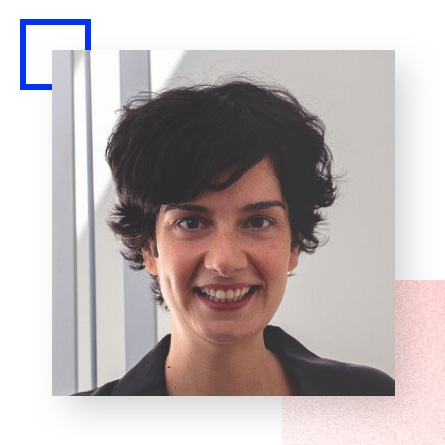
We’re different because we’re not just an academy. If you’re just looking for a boot camp to improve your data science or UX skills, there are many players out there that offer just that. It’s very important for us that when someone finds us, they can feel other women have been there, and they will understand them, from the teachers to the alumna. And that’s something you just can’t put on a Google Ad. — Patricia Fernández Carrelo, CMO, allWomen
Instead, the team gives most of their PPC budget to Facebook, Instagram, and LinkedIn, where they have more space to develop their message and speak with their audience rather than at them. “Community building works much better for us than just typical marketing acquisition strategies. And that’s why it defines our marketing strategy,” Patricia adds.
How’s that for courageous marketing by daring to be different, hey?
Small businesses like allWomen need to be creative to get a competitive edge against big players in their industries. allWomen does that by being courageous in their marketing and not being afraid to test trusted tactics. But testing takes time, and often small teams don’t have that kind of capacity. That’s where Unbounce’s landing page builder and optimization platform steps in to help you stand out of the crowd. It’s about using the power of artificial intelligence to get more out of your marketing, with less effort.
Empowering Women with Landing Page Design
It’s also interesting to see how “community” shapes the allWomen sales funnel. “We have this marketing funnel, and when we contact or have contact with women, we have a high conversion rate,” Patricia says, “because once someone talks to our admissions department, they generally convert.”
A trick to ensure prospects move forward through the funnel to meet with the admissions team is to design a targeted and relevant digital experience. “We’ve always tried to make design and usability allies of allWomen,” she adds.

Image is important for our community and us. We work with a designer to create a specific brand and look that appeals to our audience. This is also something we have been, and are continually developing. We get a lot of comments from our audience about the design. — Patricia Fernández Carrelo, CMO, allWomen
What does this look like in practice? Let’s start with allWomen’s landing pages.
Direct and to the point, right? It’s no accident. Patricia explains: “We always work to deliver all of the relevant information about our courses in the best way possible in terms of copy and content design.”
This means testing different elements on course landing pages to see which ones perform best. For example, they create variants that include more or less information about the courses to see what leads more to users downloading the syllabus. They also try different angles of their value proposition by experimenting with messages—from the skills you’ll learn to career moves made possible by allWomen courses.
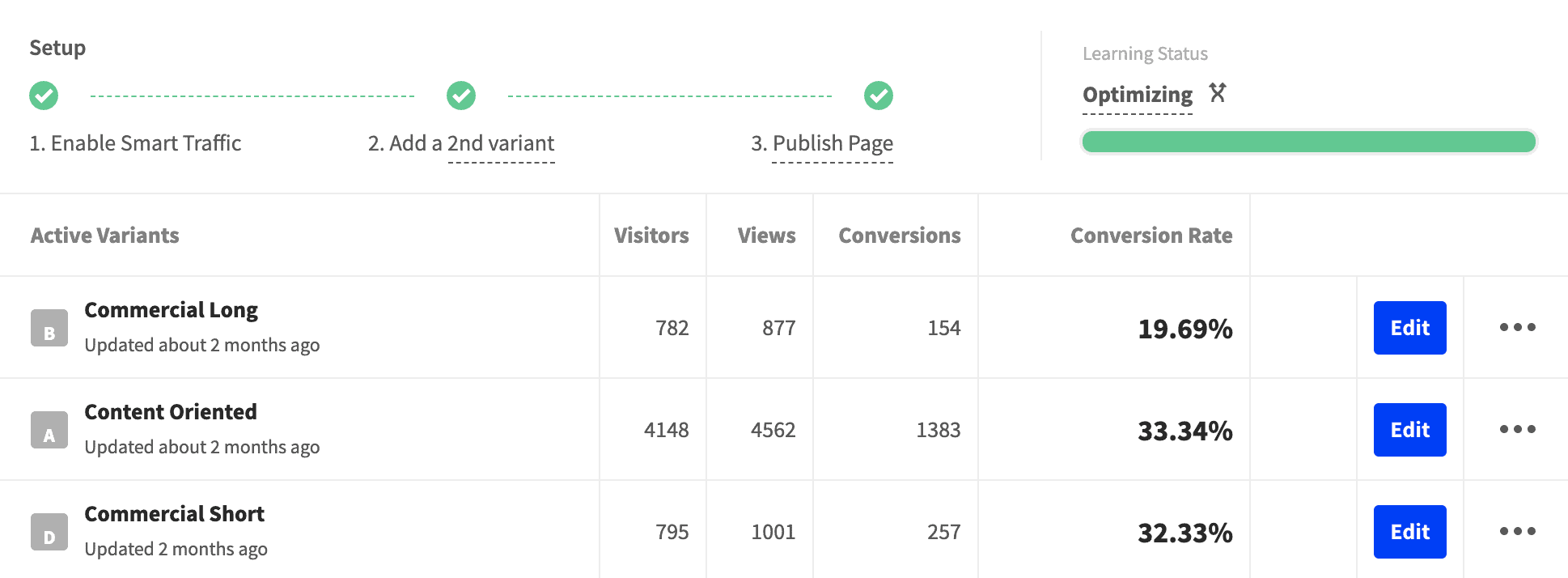

We’re really focused on what messages resonate with our audience at every moment, as this is the most important part of building a strong community of like-minded women and is aligned with our mission of creating tech courses for and by women. — Patricia Fernández Carrelo, CMO, allWomen
And that strategy works. allWomen’s landing page conversion rates sit between 16% and 52%. For the education sector, the median conversion rate is a meager 5.8%.
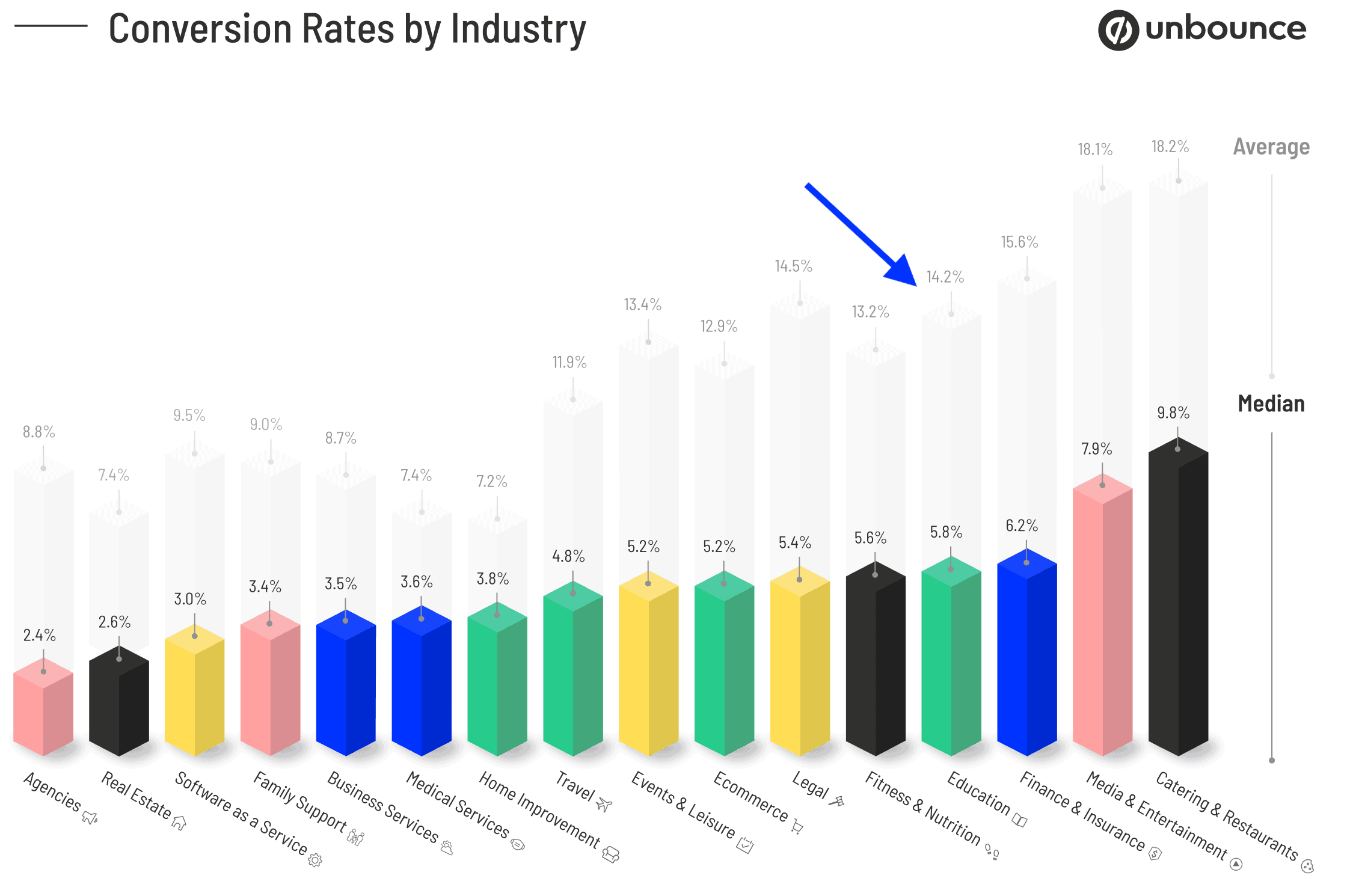
Knockin’ it out of the park. Boom.
Unleashing the power of design … to increase conversions?! What magic is this? Actually, the science checks out on this one. Here’s how you, too, can create a landing page without a designer that not only looks good—but converts better too.
Adopting a Fearless Experimentation Mindset
A key differentiator in allWomen’s marketing strategy is an experimentation mindset—and not being afraid to re-examine trends that have been proven to work for other companies.
Google Ads not doing the trick? No problem!

Our goal with allWomen has always been to generate a community of engaged and diverse women, working to overcome their fears and upskill their professional profile with technological knowledge. To do this, we’ve used different, appealing channels available today to attract them. — Patricia Fernández Carrelo, CMO, allWomen
This can be a scary tactic, for sure. Ultimately it’s about focusing their efforts on channels that best connect with their target audience. Instead of having their already small team trying to do everything, they focus on what works.
This doesn’t mean the team at allWomen only saddles up one proverbial pony, however, as they are constantly experimenting with new and different tactics.
“You can’t get comfortable in one place. Because technology and digital is a super fast-moving environment, and what works for you today might not always be the best choice,” says Cristina Monclus, digital marketing specialist at allWomen.
This includes bringing artificial intelligence into their marketing game. Using Smart Traffic, allWomen adds a second layer of relevance to campaigns, with the tool diverting traffic to the variant that’s most likely to convert. And to Patricia and the team, the proof is in the pudding. “We actually see an increase in conversion rate, which is really exciting,” she says.
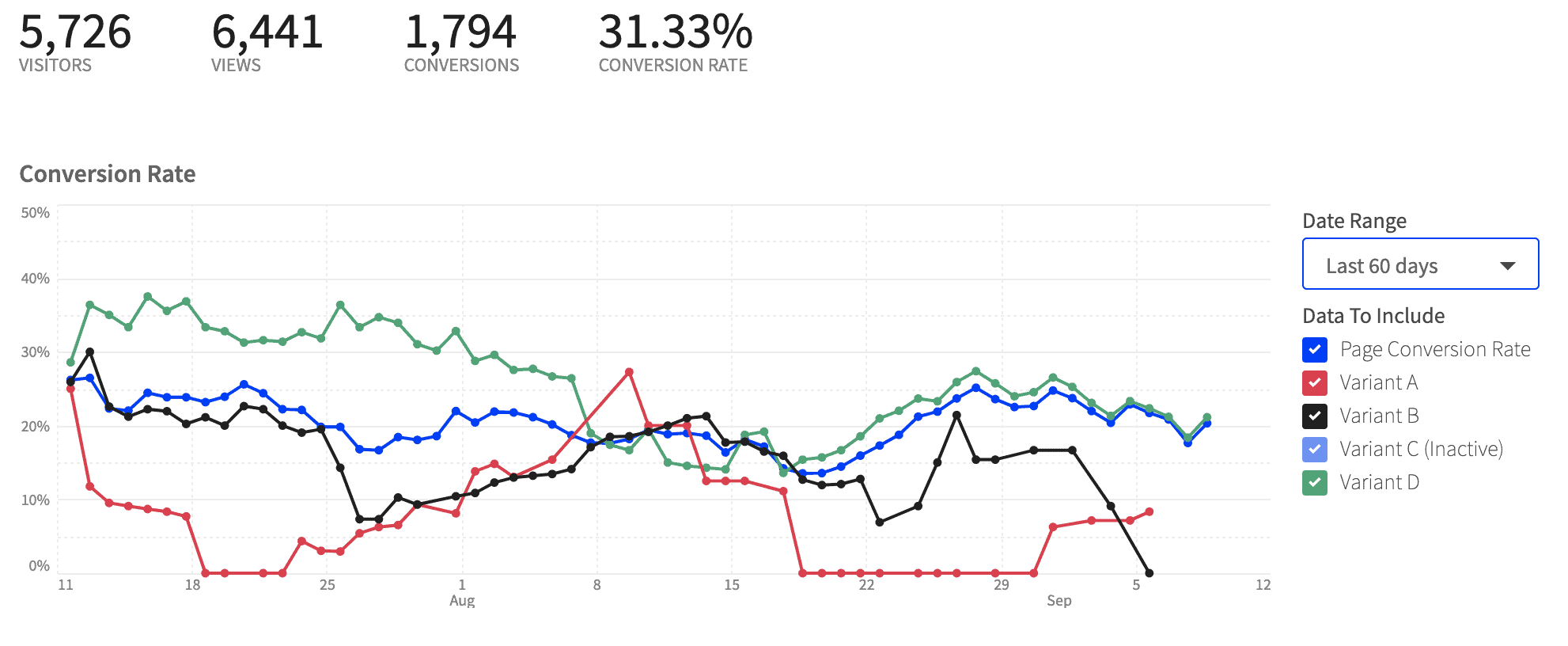

We love to explore new channels, tools, features, and tactics. It’s part of our mindset. AI can provide a lot of new insights for us to create new ways to reach our potential audience and students. We are super excited about the present and the future we are moving to with AI. — Patricia Fernández Carrelo, CMO, allWomen
Optimizing with AI—isn’t that like really hard? Actually, no. You don’t need a data scientist or software engineer on your team to get more conversions with the power of AI. Here’s how to get started.
Embrace allWomen’s “Just Do It” Mentality
What works for allWomen isn’t going to work for everyone. But that’s precisely the point. What makes their strategy so much fun—and successful—is the courage to test, try, and learn.

There are so many tactics and so many channels you could use, especially as a startup. But it’s all about finding what best supports your mission. We love to use tech to get to know our community and our audience better and, with that information, make a bigger impact on women who could potentially be really interested in our courses and services … For us, the future is intelligent, the future is bright, and the future is female. — Patricia Fernández Carrelo, CMO, allWomen
What does *your* future look like? Go make it happen.

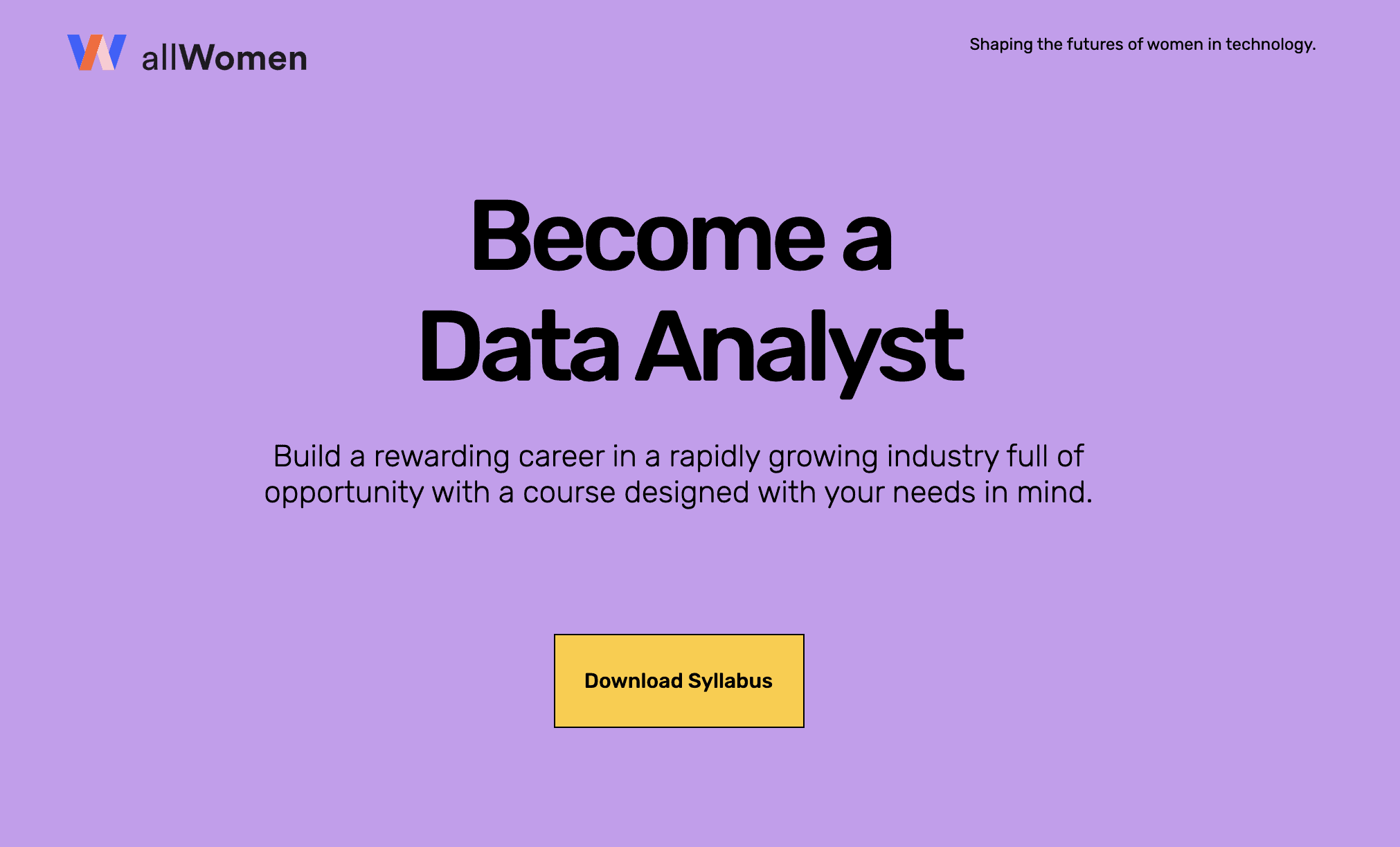
![[Equal Pay] Pay Up for Progress](https://unbounce.com/photos/EPC_Blog_CTA.png)
